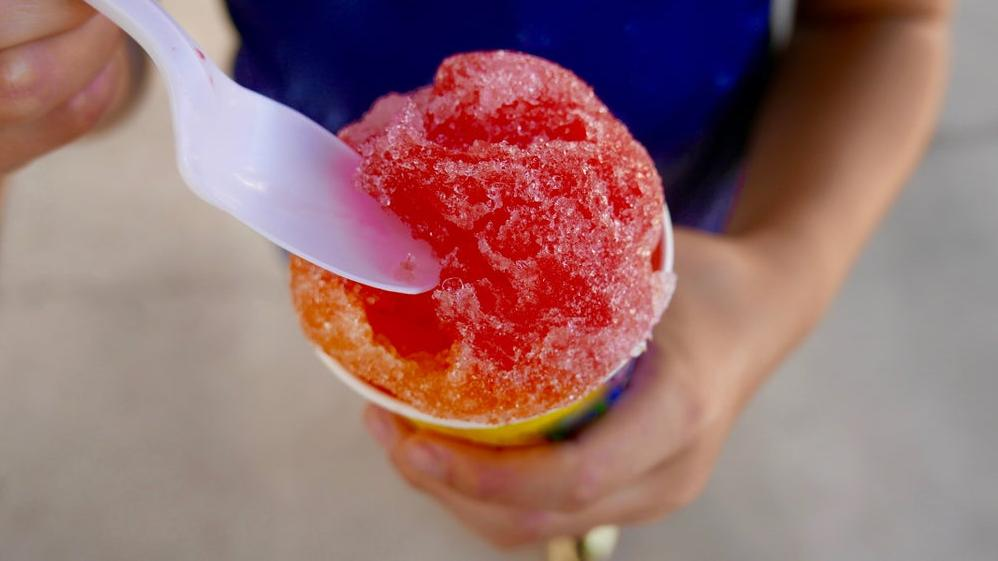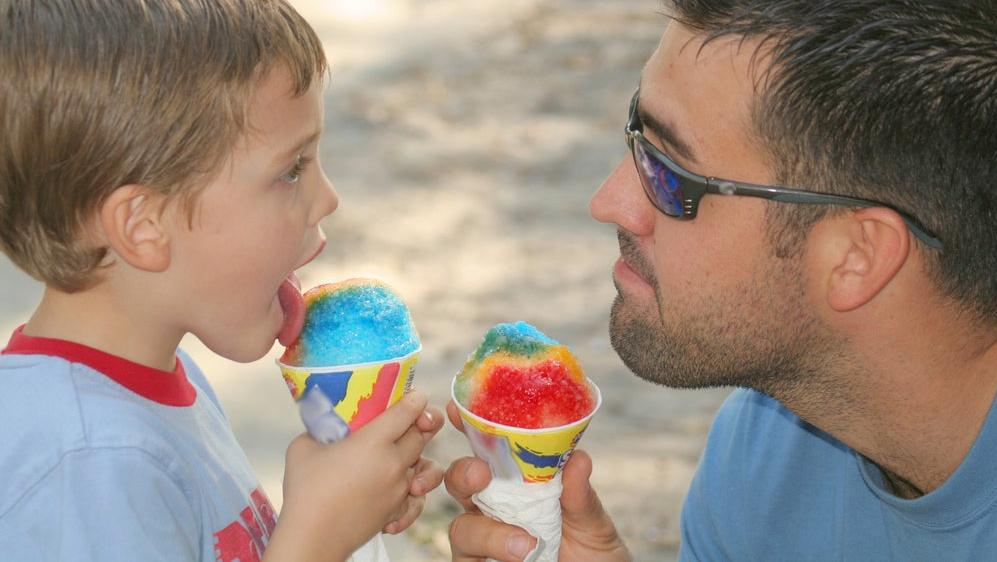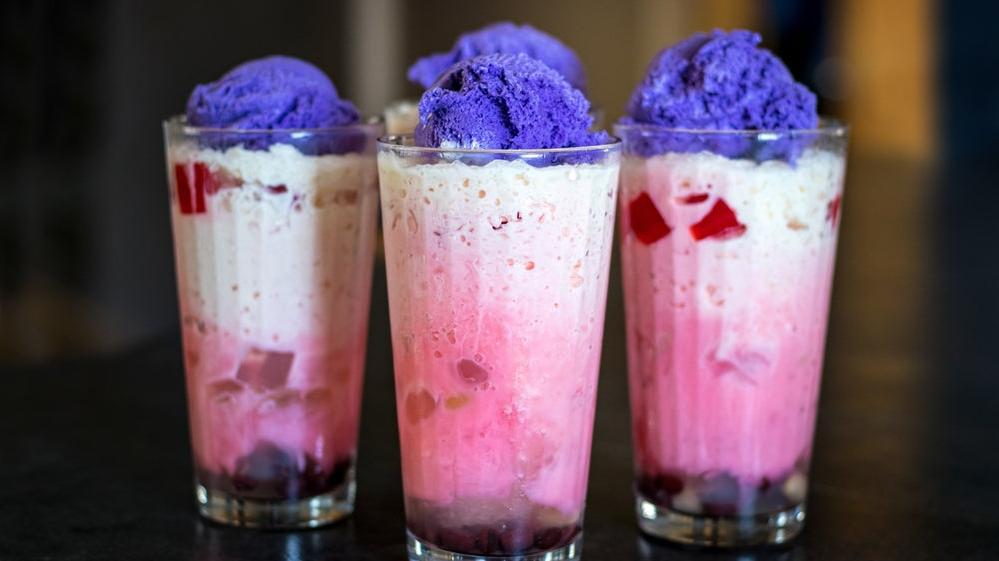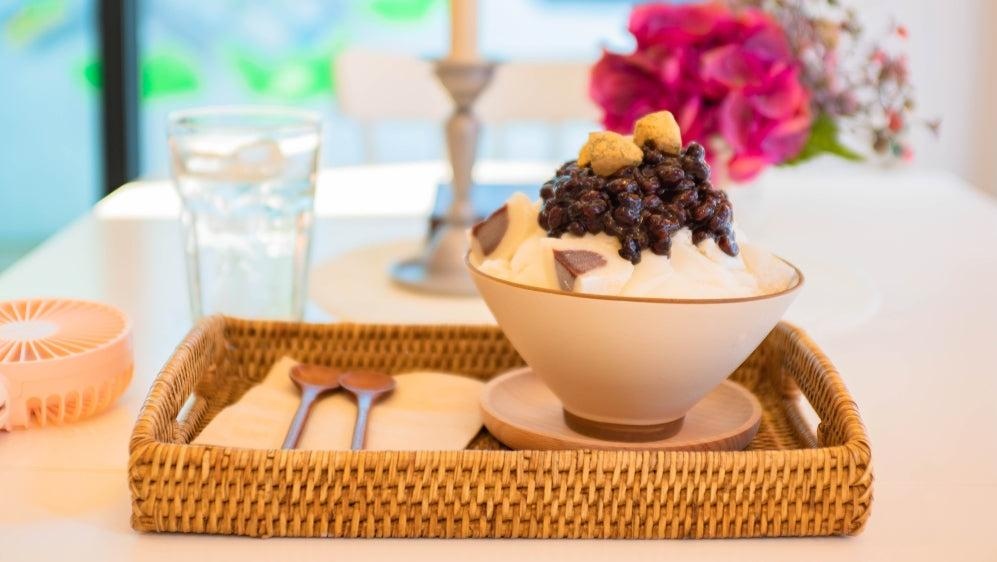10 Frozen Treats For Shaved Ice Connoisseurs
Consider this the sweaty traveler's guide to all summer ices.
The summer I was 17, I earned my gas money toiling at Sno Biz, a seasonal shack half a mile from my parents' place. Sno Biz was the place to be, a town hub you could post up at a sticky picnic table and ogle kids from neighboring high schools. It was also a rough place to work; I, along with a few other sullen teens, had to lug huge blocks of ice into the shack and shave them by hand, all while being set upon by sugar-crazed grasshoppers and long lines of sweaty customers paying in quarters. But it came with one major perk: all the shaved ice I could eat during my shifts.
Now, a decade later, I still consider myself something of a shaved ice connoisseur. Summer ices go way beyond the rock-hard sno-cones, with all kinds of textures and toppings depending on where you look. From Philadelphian water ice to Puerto Rican piraguas, sugary snow is a language spoken 'round the world.
Snow cones
When you think of ballparks or state fairs, you probably picture traditional snow cones. Typically served in a waxy paper cone, these simple treats are made with crushed ice, making them crunchier and less fluffy than shaved ice. You'll usually see snow cones in a few classic flavors like cherry, blue raspberry, or grape; since the syrup tends to settle at the bottom of the cone, there's not a lot of room for extra syrup or toppings of any kind. Great for kids, though.
Shaved ice
Now we're talking. Where snow cones feature large ice granules, shaved ice is actually more akin to, well, snow. Shaved ice is made by trimming down a block of ice with a hammer, then gently shaving it using a hand-crank machine fitted with a blade. The result is a fine and fluffy pile of "snow" that absorbs syrup and toppings like condensed milk. More absorption = more room to play with flavors and combine syrups, which is why you'll see more variety on a shaved ice menu.
Japanese kakigori
Similar to shaved ice, Japanese kakigori is a light, fluffy, snow-like dessert made with a mechanical ice shaver. Unlike shaved ice, kakigori is all about the toppings. Per The Japan Times, kakigori—which is said to date back to the 10th or 11th century—is typically served in a low cup or bowl, then topped with a tower of syrups and toppings. Toppings include everything from matcha pudding to mochi, resulting in a creamier, more indulgent product than American shaved ice.
Hawaiian shave ice
Shave ice is not to be confused with shaved ice. The history of this Hawaiian favorite sits at the intersection of kakigori and American shaved ice; per The New York Times, shave ice is descended from Japanese kakigori, which was brought to Hawaii by Japanese plantation laborers in the early 1900s. Like kakigori, shave ice takes the shape of a soft, fluffy snow. The toppings diverge a bit; Hawaiian shave ice is often served with a scoop of ice cream and topped with sweet red adzuki beans.
Philly water ice
My Pennsylvania-born boyfriend introduced me to water ice, the shaved ice alternative popular throughout the northeastern U.S. It's really less of a shaved ice and more of a sorbet or Italian ice, made from a mixture of water, sugar, and fruit juice. The result is a creamier, thicker version of an Italian granita. While water ice and granita contain the same ingredients, granita is made by scraping bits of ice into a pile of small flakes. The result is, well, icier than you'll see with water ice.
Indian gola
Gola, sometimes called chuski, is a popular treat that you can score from street-food vendors across India. Its coarse texture is similar to that of an American snow cone, but that's where the similarities end. While American snow cones are limited to flavors like cherry and grape, gola vendors often incorporate flavors like mango and rose into their refreshing product. Unlike snow cones, gola isn't served in a waxed paper cone; instead, it's condensed and placed into a cup, almost like a giant popsicle (minus the stick).
Puerto Rican piraguas
You don't have to travel to Puerto Rico to find piraguas, the hand-shaved treats that are heavy on the syrup and often served with a straw. You can also find piragua vendors in regions with large Puerto boricua populations, including parts of New York City and Chicago. They're worth seeking out—serving in a plastic cup, piraguas are a highly portable treat meant to be slurped in the summer heat. Depending on where you look, you can usually score flavors including strawberry, pineapple, coconut, and tamarind.
Thai nam kang sai
Like gola and piraguas, Thailand's street vendors shave their ice on the go using hand-crank machines. Nam kang sai is known for dazzling flavor combinations incorporating basil seeds, jackfruit, taro, sweet corn, and water chestnuts. You'll also see nam kang sai topped with Hale's Blue Boy sala syrup, an iconic soda flavored with palm fruit syrup.
Filipino halo-halo
Halo-halo is as visually pleasing as it is delicious. It's no wonder that the many-layered concoction is served in a tall, clear glass to show off its bright, cheery components. While halo-halo combinations vary widely, it always starts with a classic shaved ice base. From there, layers tend to include fresh fruit, mango or coconut jelly, and ube ice cream. Of course, it's all about personal preference; this recipe from Chef Tiana Gee includes mango jelly, fresh fruit, and sweetened condensed milk infused with pandan, a sweet, floral herb.
South Korean bingsu
Bingsu, sometimes written as bingsoo, is what happens when you look at a block of frozen cream or milk and think, "I can shave that." Yes, friends: this South Korean delight is just like shaved ice, but the ice in question is frozen dairy. As you might imagine, the result is deliciously fluffy and creamy, often topped with fruit, condensed milk, toasted soybean powder, and sweet red beans. (The latter is a key ingredient in patbingsu, red bean shaved ice.)



